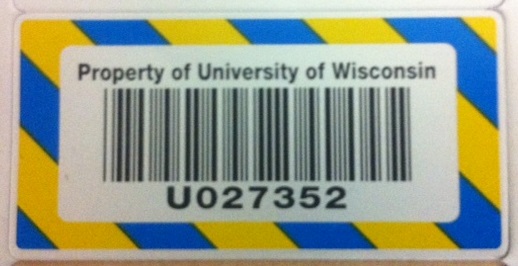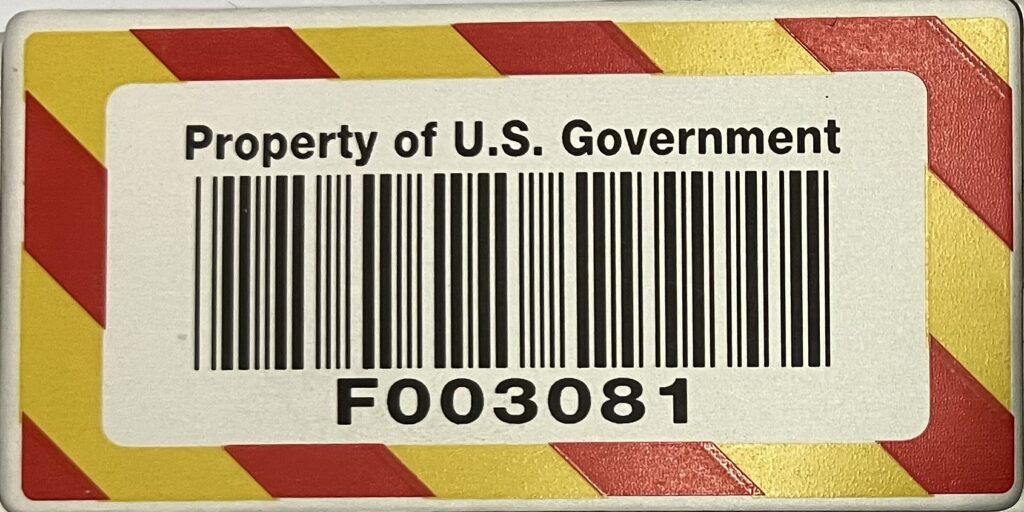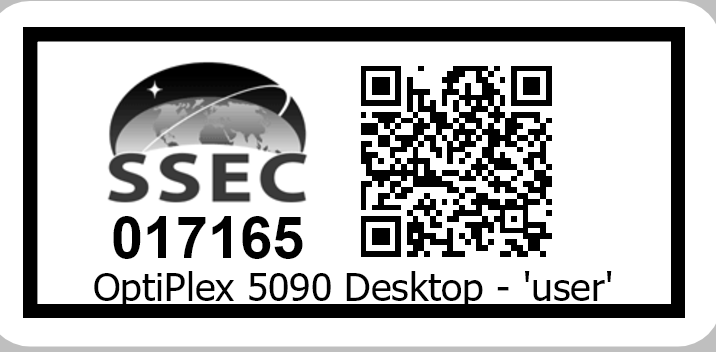Capital Equipment and Inventory
UW–Madison has a fiduciary responsibility to manage the capital assets for which it has been entrusted. This includes strict adherence to both State and Federal policies in an effort to assure safeguarding and accounting for all capital assets (see UW-3008 Capital Equipment Policy). For questions please contact the Purchasing Office.
Capital equipment asset – An acquisition qualifies as capital equipment if it meets these four criteria:
- Item has a per-unit acquisition cost of $5,000 or more before any applicable trade-in allowance or qualifies as a fabrication with a cost of $5,000 or more.
- The acquired item has a useful life expectancy of one year or more.
- The item is moveable; that is, it is not permanently affixed to a building or another object in such a way as to lose its unique identity.
- The item is an inanimate object, typically used to perform tasks (e.g. research, grounds-keeping, farming, transportation, etc.). Items like artwork, animals and most software are not considered capital equipment assets.
Fabrication – Purchases of component parts and direct labor that are custom joined to create an asset not commercially available is capitalized together as one asset. To meet this definition, component parts must work together to perform one function. Each component part must be necessary for the asset to function, i.e. removal of any part would result in the asset not operating at capacity or for its intended purpose. Software can be considered a fabrication component only if the software is integral to the control and operation of the fabricated asset, i.e. without the software the fabricated asset will not function for its intended use.
Department Property Administrator (DPA) – Serves as the liaison between their department/division and the Property Control Office for matters regarding capital equipment.
Purchasing Capital Equipment on Sponsored Projects
All purchase requests containing capital equipment must go through an additional approval to ensure that the project being used has the proper funding for the equipment. If not, then it may be necessary to reach out to the sponsor for approval prior to making the purchase. Complete the SSEC Purchase Request Form and email the form to purchasing@ssec.wisc.edu. Please allow enough time in case we need to work with the sponsor.
Tracking Capital Equipment
All capital equipment must be tagged with the appropriate asset ID tag (Federal or University-owned), and records completed in the central asset management system when the asset, whether purchased or fabricated, is put into service. This applies to all capital equipment assets whether acquired through purchases, gifts, or transfers.


All capital equipment is subject to more rigorous reporting and auditing requirements. Any changes to the condition, location, or users of capital equipment assets should be promptly reported to the Department Property Administrator (DPA) to ensure the UW Property Control database is accurate. Capital equipment is subject to audit at any time from the UW, sponsors, or the Wisconsin Legislative Audit Bureau (LAB).
Regardless of the capital asset’s age, current book value, condition, or whether the project has ended, all capital assets continue to be tracked and subject to additional requirements until they are approved for removal through an official disposal process.
Disposing of Capital Equipment
To maintain a controlled environment, accurate records, and fulfill contractual obligations, departments must receive written approval from Property Control prior to disposing of capital equipment. Property Control must record how equipment is disposed/retired (see 3008.7 Equipment Disposition Procedure).
Prior to disposing of capital equipment, the responsible employee or any other department employee in custody of the equipment must notify the DPA, who will complete the required forms, obtain signatures, and submit them to UW Property Control. If no restrictions exist, Property Control will authorize disposal and notify the DPA in writing.
The retirement reasons fall into two general categories: accountable (pro-active decision made by department to retire equipment) and unaccountable (no decision made by department to retire equipment).
Accountable disposition reasons
- Items have become surplus to the department’s needs, obsolete, or unrepairable.
- Items will be traded in for credit on purchase of a like item.
- Items will be cannibalized for parts.
- Items will be returned to a vendor:
- Items will be delivered to a sponsor per contract terms.
Unaccountable disposition reasons
- Items have been lost.
- Items have been stolen.
- Items have been destroyed.
Departing Employees – In some instances, departing employees may request to take existing equipment to a new institution. A separate procedure is required in this case (see 3008.11 Departing Employee Request to Take Capital Equipment to a New Institution Procedure).
SSEC Inventory
SSEC also tracks inventory with a purchase value of $500 or more. Exceptions include items that are internal components of a larger inventory asset. These assets will receive an SSEC asset tag upon being received at SSEC and put into use.

All users can see a list of the inventory assets they are responsible for on their SSEC Admin Dashboard. To update or request a change to the status of your inventory items, please click on the sticker number of the item, make any requested changes, then select the “Submit Changes for Review” button at the bottom of the page. Please contact the Purchasing Office with any questions or updates.
